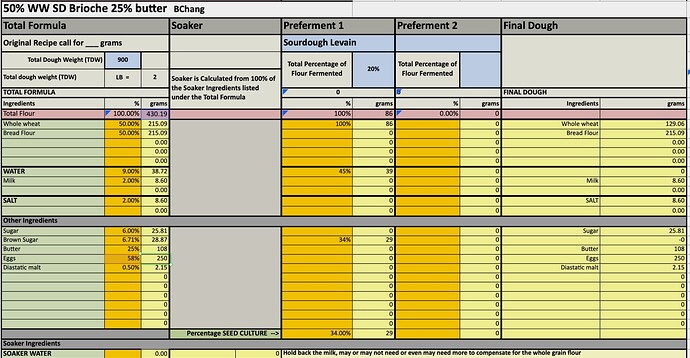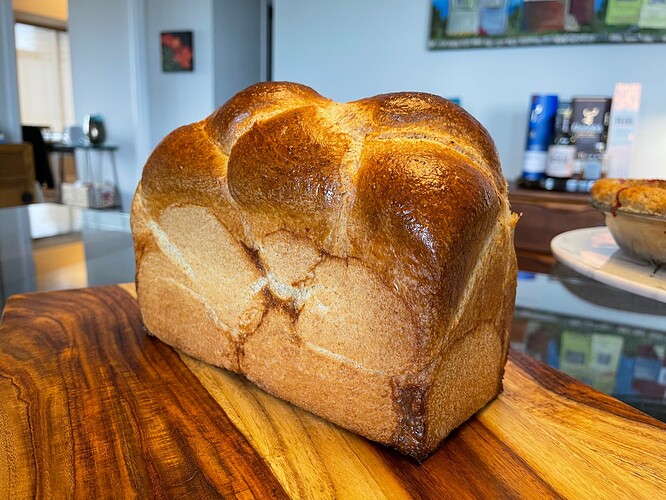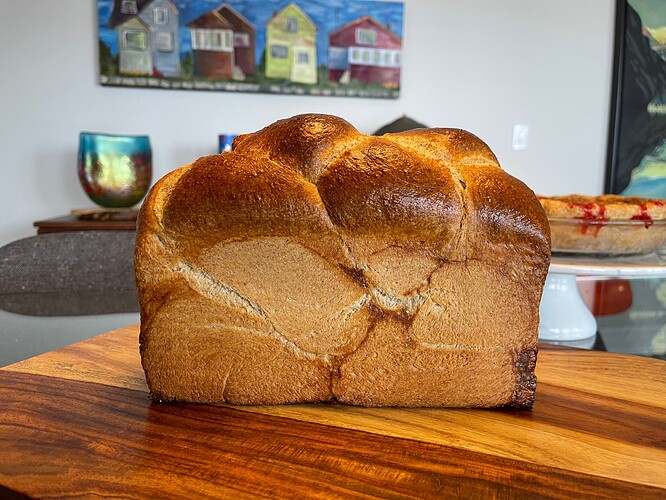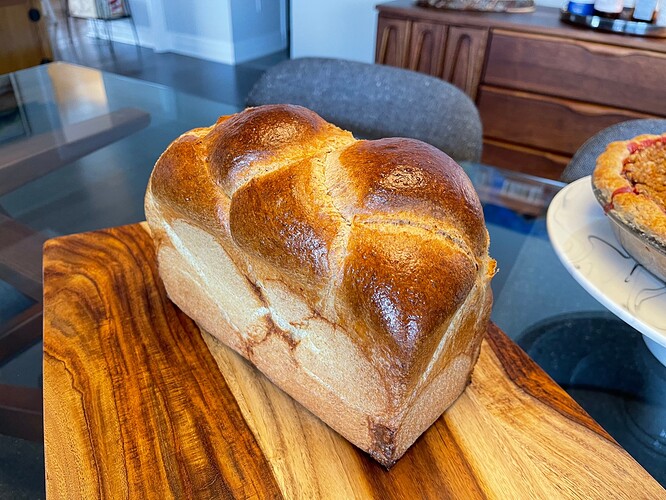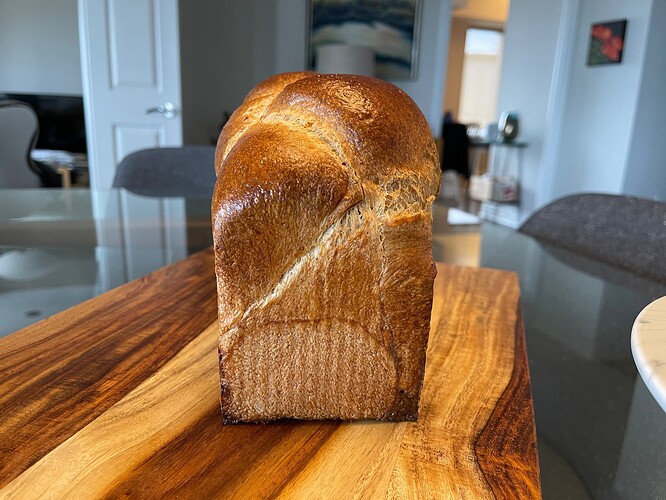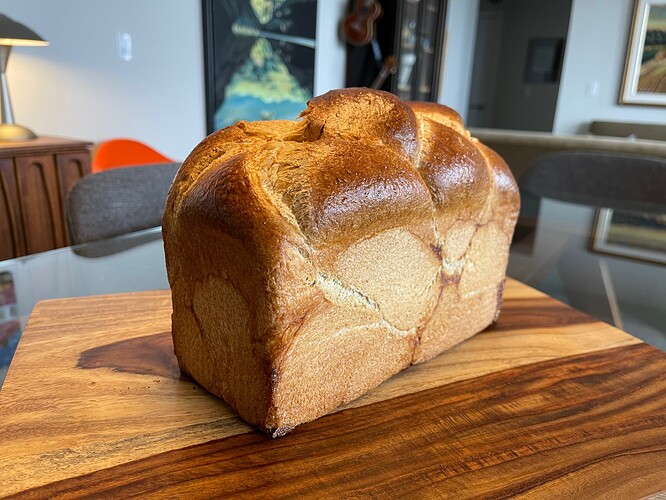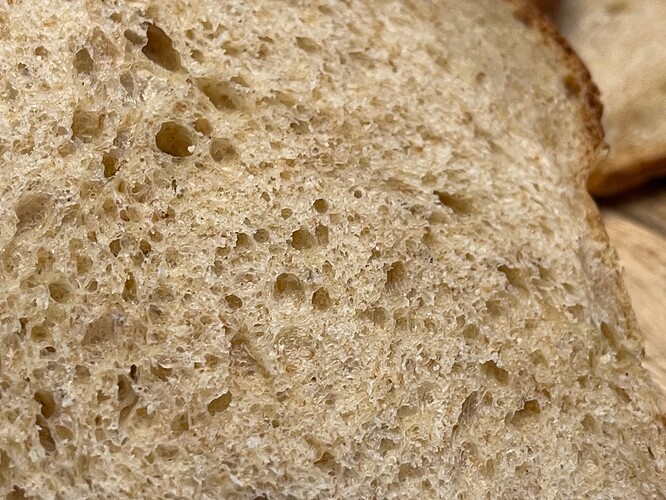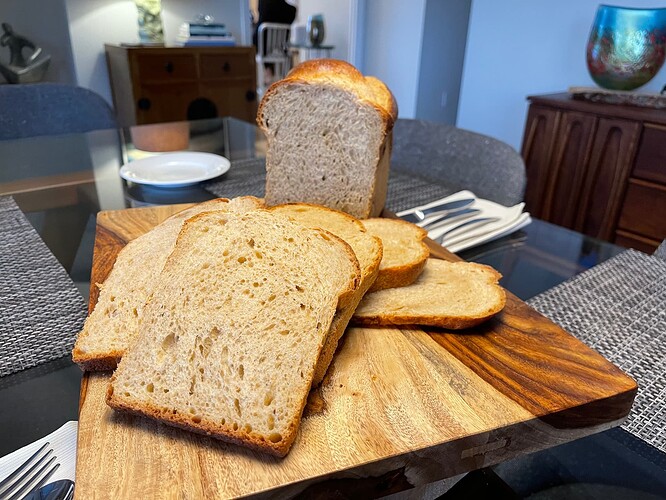The first time I baked brioche I did a test bake baking them as buns. For today’s bake I decided that I’d plait my brioche dough and bake it in a pullman pan for fun. I reduced the butter because I ended up not having enough for 50% so decided to go ahead and make adjustments and make it at 25% butter, poor man’s brioche LOL.
evain
Mix the levain ingredients in a jar or pyrex container with space for at least 300% growth.
Press down with your knuckles to create a uniform surface and to push out air.
At a temperature of 78ºF, it typically takes up to 10-12 hours for this sweet stiff levain to be at peak.
Dough
In the bowl of a stand mixer, add the milk, eggs, salt, sugar and levain. Mix and then break up the levain into smaller pieces. Next add the flours. Mix on low speed until there is no dry flour remaining. Once incorporated increase the speed gradually to medium. Mix at medium until the gluten is moderately developed. With the mixer running add the room temperature butter one pat at a time until it is fully incorporated, waiting until each pat is well incorporated before adding the next. Continue to mix until you can pull a good windowpane, not quite as good as a white flour because the bran will interrupt the windowpane somewhat.
Shape the dough into a tight ball, cover in the bowl and ferment for 3-4 hours at 82ºF. There should be some rise visible at this stage.
You can next place the dough into the fridge to chill the dough for about 1.5 hours, this makes rolling the dough easier, remember if you do so the final proof will take longer. Alternatively, you can do a cold retard in the fridge overnight.
Prepare your pans by greasing them with butter or line with parchment paper.
Scrape the dough out onto a clean counter top. Lightly flour the bench. Transfer the dough onto the bench and divide it into four. Shape each into a roll, allow to rest 5 mins. Next like a baguette, shape each roll into a long log with tapered ends. Next do a 4 strand plait. Tuck the ends underneath and transfer into the prepared pan.
Cover and let proof for 6-8 hours, longer time if you chilled your dough for shaping. I proof until the top of the dough comes to within 1 cm of the top edge of the pan.
Preheat the oven to 350F and brush the dough with the egg-milk wash (1 egg with 1 tsp of milk and pinch of salt). Just prior to baking brush with the egg-milk wash again.
Bake the loaves for 35-40 minutes or until the internal temperature is at least 190ºF, rotating as needed to get even browning. Shield your loaf if it gets brown early in the baking process. After 35-40 mins remove the bread from the pan and bake a further 10 mins by placing the loaf directly in the oven on the rack with the oven turned down to 325ºF. You can brush the top of the loaf with butter if you wish at this point while the bread is still hot to keep the top crust soft.
Unfortunately I under fermented this a bit based on the separation of the plaits. Although it passed the finger poke test I’d say I should have trusted the aliquot jar which was only at 90% and should have let it reach at least 100%.
